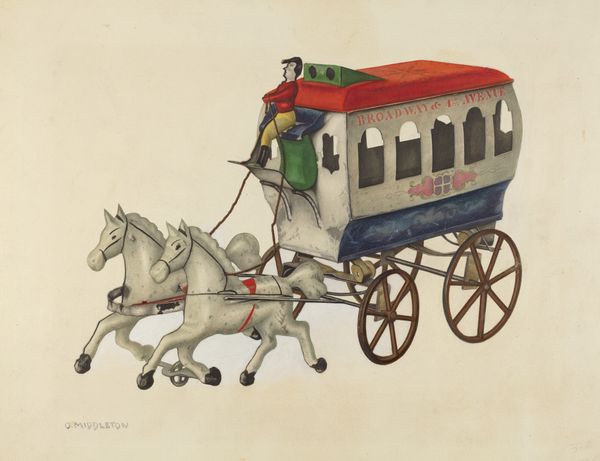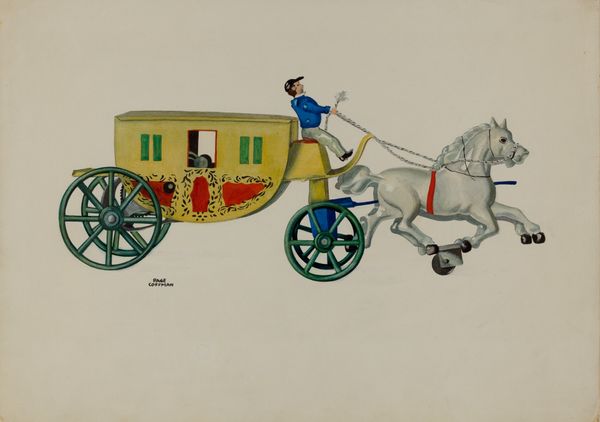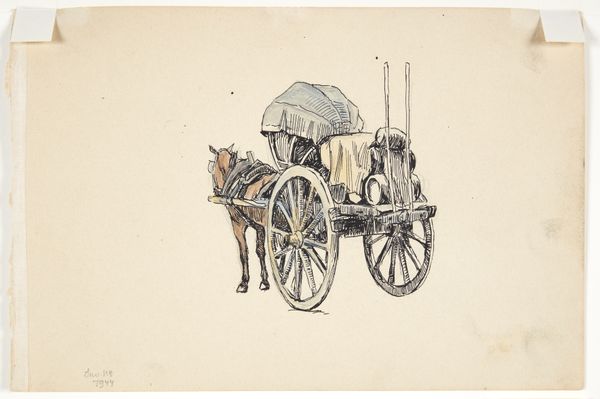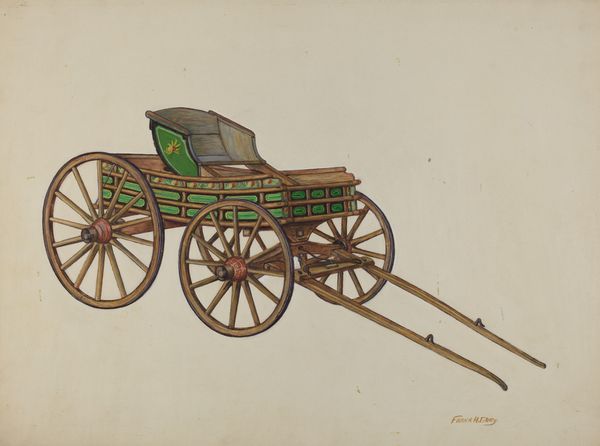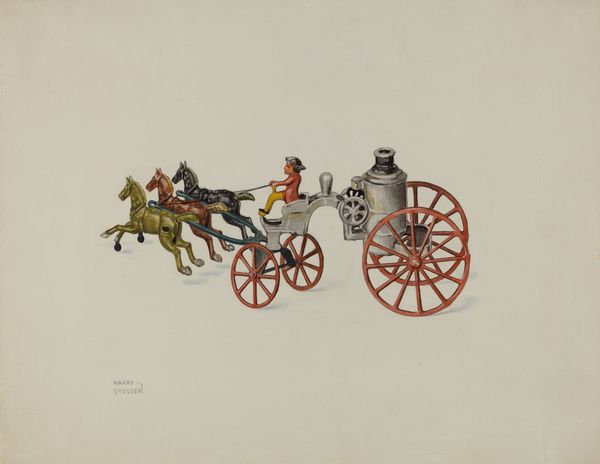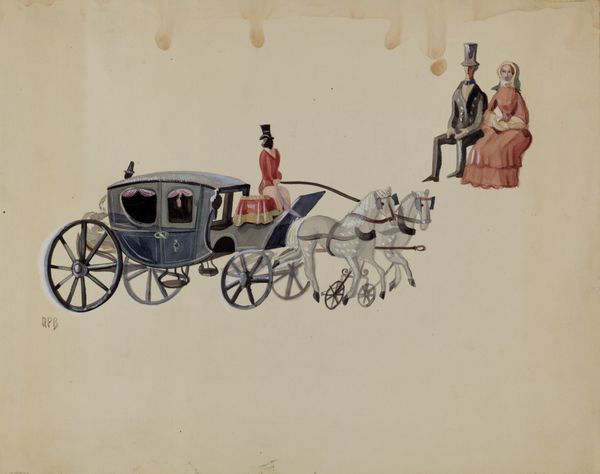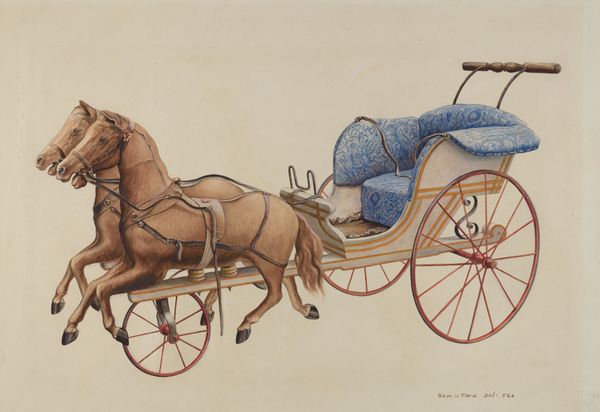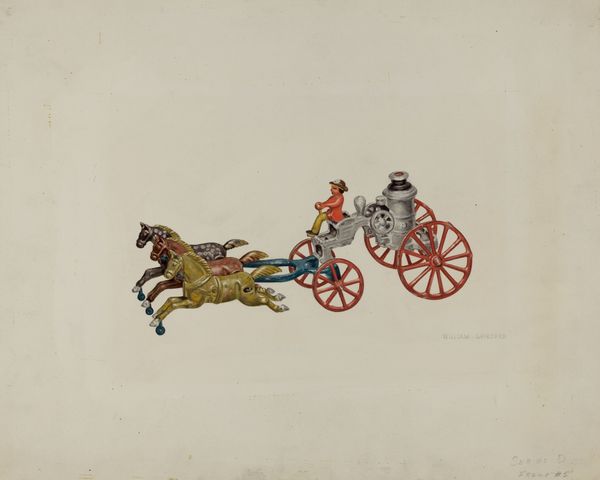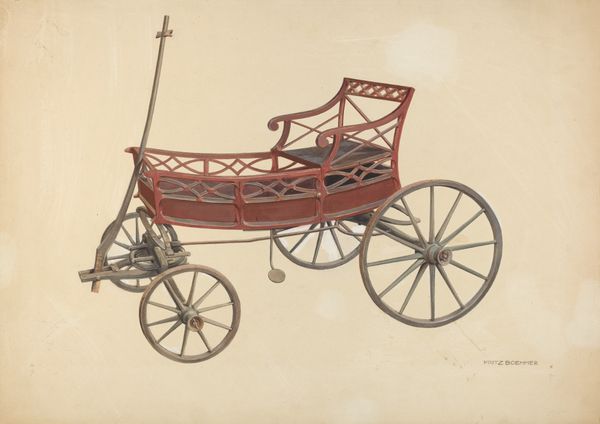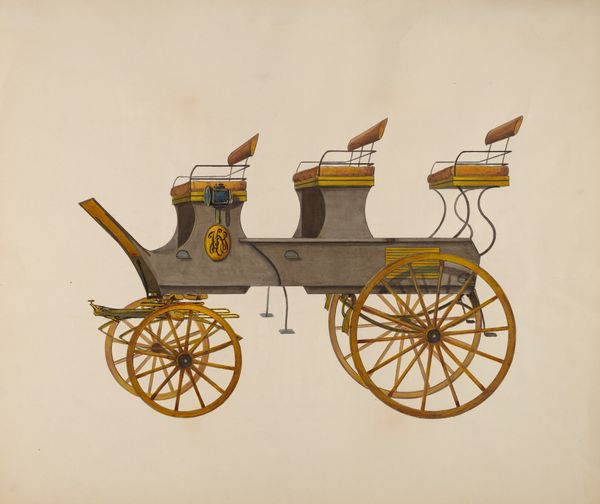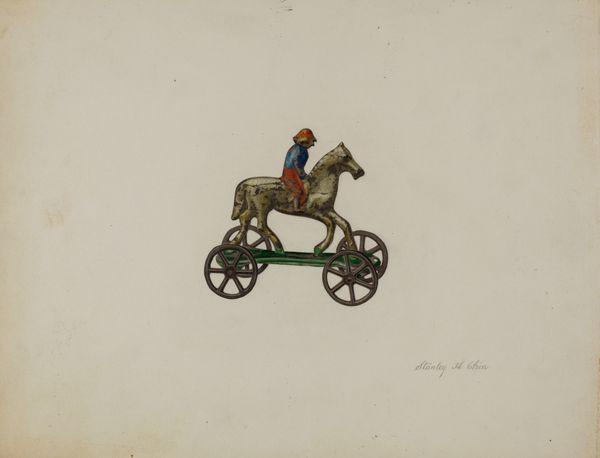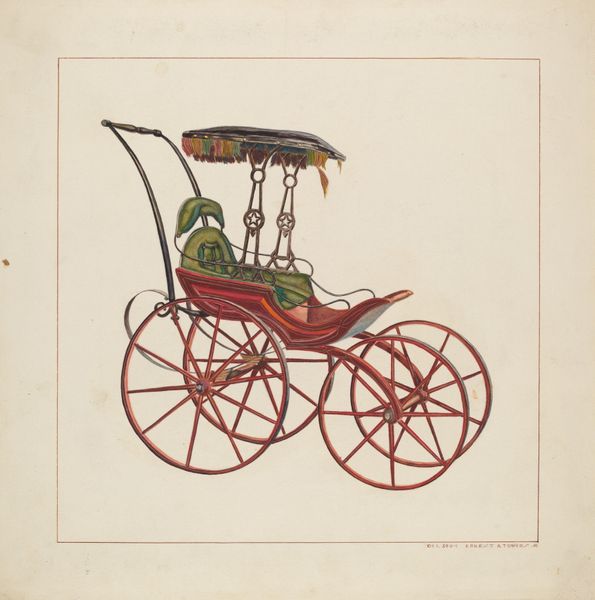
drawing, watercolor
#
drawing
#
caricature
#
figuration
#
watercolor
#
watercolour illustration
#
genre-painting
#
miniature
#
watercolor
#
realism
Dimensions: overall: 29.5 x 36 cm (11 5/8 x 14 3/16 in.) Original IAD Object: 13 1/2" long; 4" wide; 5 1/2" high
Copyright: National Gallery of Art: CC0 1.0
Curator: The miniature watercolor and drawing before us is titled "Toy Goat Cart" created by Elmer Weise between 1935 and 1942. Editor: It has such a delicate, almost whimsical presence. The composition, dominated by the meticulously rendered cart and the twin goats, creates a sense of childlike wonder. The space around it is completely empty. Curator: Indeed, Weise captures the playful essence of folk art traditions in America, where handmade toys were not mere objects, but carriers of cultural memory and familial love. Editor: The formal construction is striking. The geometry of the cart – the straight lines, the repeating circles of the wheels – is playfully offset by the organic forms of the goats. What do they signify? Curator: Goats, in numerous cultures, symbolize vitality, resilience, and even stubbornness. These toy goats might represent the hopes parents held for their children's tenacity in life, their ability to forge ahead, pulling their own weight, even in a playfully difficult world. Editor: And the driver figure in the cart—almost seems lost within the design, his role is rather ambiguous? Curator: He adds to the rich symbolic framework, recalling the shared human condition. Weise perhaps implies, is that even the person in charge is bound by larger, symbolic, 'animalistic' forces that drive and guide us, much like the painted harness between them. Editor: The palette also adds intrigue – primary colors set against muted, almost pastel hues. It has a certain faded innocence about it. I wonder how Weise created this specific balance? Curator: The artist captured a period defined by economic hardship and global uncertainty, when a simple toy like this became an emblem of resilience and ingenuity for kids during the time it was painted. The colors, you see, are not just pigments; they evoke feelings connected with themes such as innocence and play and an American hope that was there when the toy was constructed. Editor: Considering the close-focus and details, it is striking how such a seemingly simple illustration unlocks layered feelings within its form. It has the charm of being a childhood memento for hard times. Curator: Absolutely, its cultural memory lingers long beyond the toy. It’s more than it meets the eye.
Comments
No comments
Be the first to comment and join the conversation on the ultimate creative platform.
